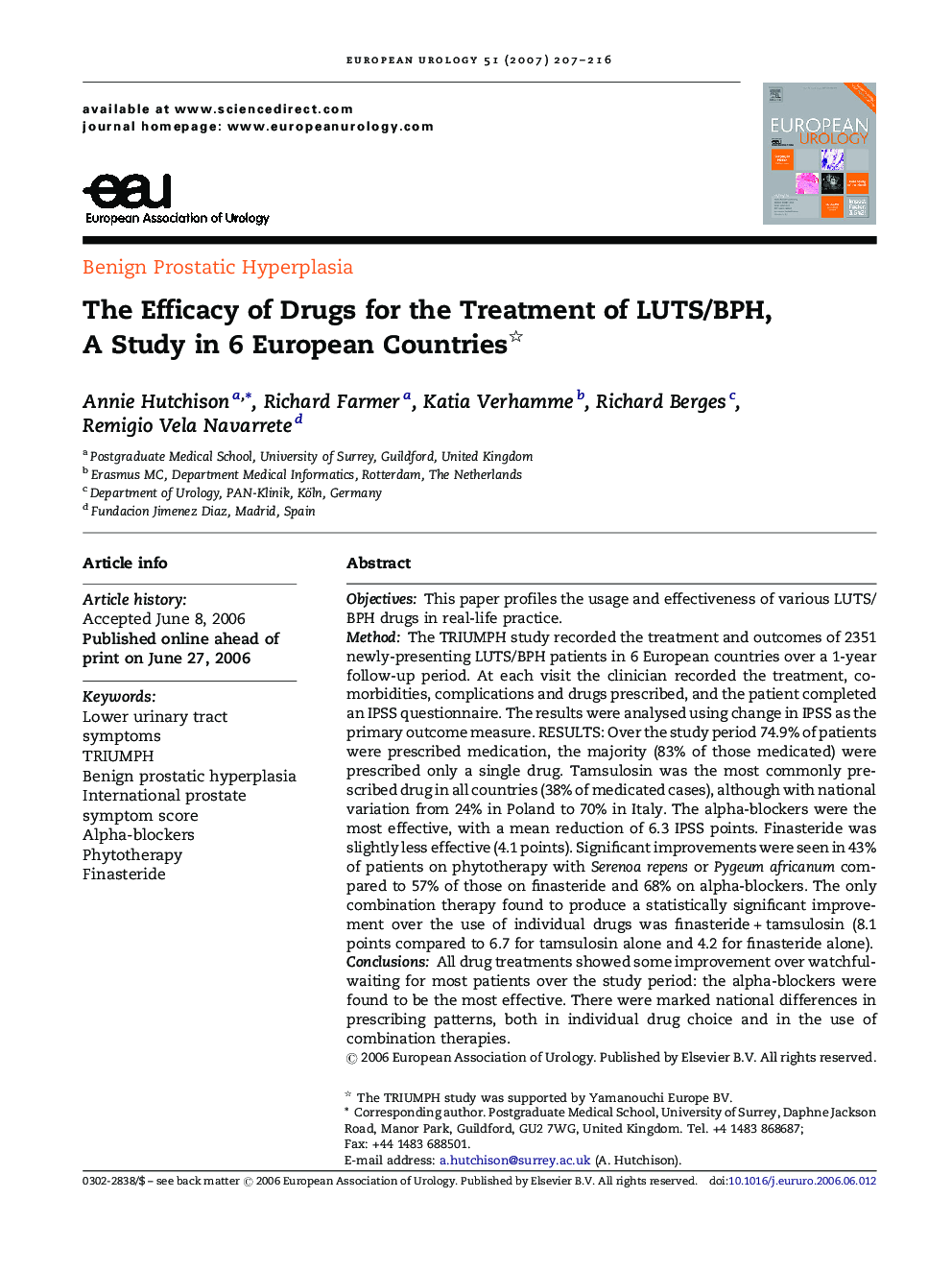| Article ID | Journal | Published Year | Pages | File Type |
|---|---|---|---|---|
| 3923434 | European Urology | 2007 | 10 Pages |
ObjectivesThis paper profiles the usage and effectiveness of various LUTS/BPH drugs in real-life practice.MethodThe TRIUMPH study recorded the treatment and outcomes of 2351 newly-presenting LUTS/BPH patients in 6 European countries over a 1-year follow-up period. At each visit the clinician recorded the treatment, co-morbidities, complications and drugs prescribed, and the patient completed an IPSS questionnaire. The results were analysed using change in IPSS as the primary outcome measure. RESULTS: Over the study period 74.9% of patients were prescribed medication, the majority (83% of those medicated) were prescribed only a single drug. Tamsulosin was the most commonly prescribed drug in all countries (38% of medicated cases), although with national variation from 24% in Poland to 70% in Italy. The alpha-blockers were the most effective, with a mean reduction of 6.3 IPSS points. Finasteride was slightly less effective (4.1 points). Significant improvements were seen in 43% of patients on phytotherapy with Serenoa repens or Pygeum africanum compared to 57% of those on finasteride and 68% on alpha-blockers. The only combination therapy found to produce a statistically significant improvement over the use of individual drugs was finasteride + tamsulosin (8.1 points compared to 6.7 for tamsulosin alone and 4.2 for finasteride alone).ConclusionsAll drug treatments showed some improvement over watchful-waiting for most patients over the study period: the alpha-blockers were found to be the most effective. There were marked national differences in prescribing patterns, both in individual drug choice and in the use of combination therapies.
